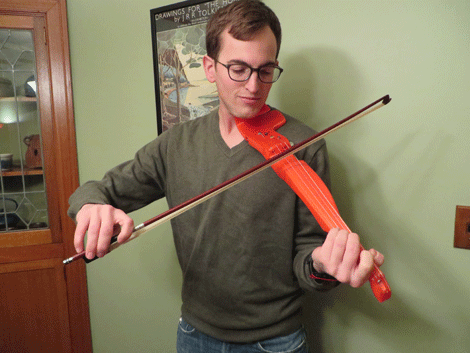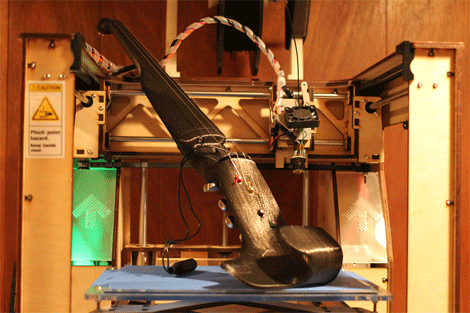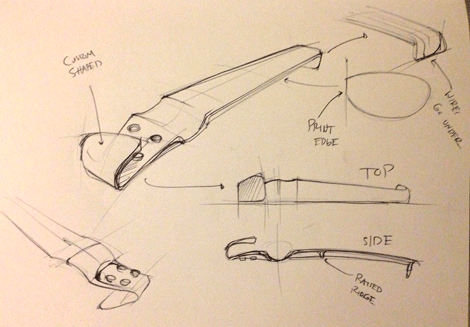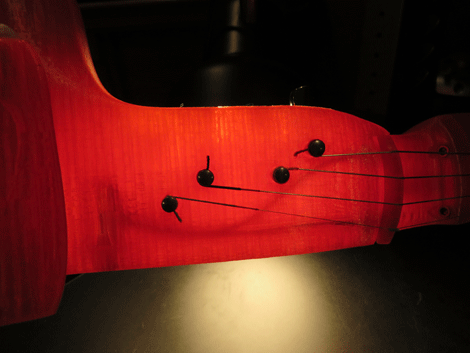
A fiddle for all?
Last month our eye was caught by a violin moulded from perspex, and as impressive a feat at this is, a 3D printed fiddle has since captured our imagination.
David Perry and his open source cohorts have been fine tuning their F-F-Fiddle (FFF = fused filament fabrication, or FDM) allowing anyone with access to a 3D printer to build their own instrument.
Having begun as a collaboration with his friend and industrial designer Dan Nicholson, having bought a 3D printer after visiting a New York Maker Faire, the project is now on its sixth iteration.

Printer fresh – one of the early iterations
“I was compelled to buy a 3D printer, but also to make functional things,” says David. “The F-F-Fiddle is a great example of a functional object that you can make with a home 3D printer, and I hope that it inspires others to push themselves to design and make functional things with their printers!”
“[Dan] and I talked about the intention behind the project and what we thought were cool examples of electric violins (I have a Pinterest board for the project), then Dan cranked out a few quick concept sketches, and from there I took it into Autodesk Fusion 360,” says David.
“We worked together to get the initial form, collaborating in Fusion 360, and once we had a form (t-spline body) that we both liked, I converted the surfaces into solids and added mechanical details.

Initial sketches of the F-F-Fiddle
“The first one didn’t work, but it gave us the info we needed to know that such an instrument was possible. From there I iterated around improved components and better dimensions for playability until we got a functional violin! It took three iterations to get to something reasonable, and we’re on the sixth iteration now.”
The limitations of a domestic 3D printer have been welcomed by the project, with it being a project designed specifically for the budding amateur.
“We embrace the flat build surface, use curvy internal cable routing (that can only be 3D printed), and the design is open source to allow anyone to make, distribute, and redesign the F-F-Fiddle,” says David.
Fusion 360 was used for all of the design, Netfabb Basic for STL manipulations, Slic3r and KISSlicer for slicing the model for 3D printing, and Repetier-Host for printer control.

3D printing has allowed for curved internal wire routing
The latest fiddle – in a bold bright red – was printed on a Makerbot Replicator 2 and sliced with MakerWare, but all others were printed on a Type A Machines Series 1.
Off the shelf components make up the electric aspects of the fiddle, making it extremely accessible, and most importantly, playable.
“What we want to do is to show everyone what’s possible with inexpensive digital design and fabrication tools,” concludes David.
“By inspiring others to make things, we, collectively, will discover new and exciting ways to use these tools.”
Designers are invited to join the Fusion 360 group if they want to tinker with the CAD, with the files also available on GrabCAD.






